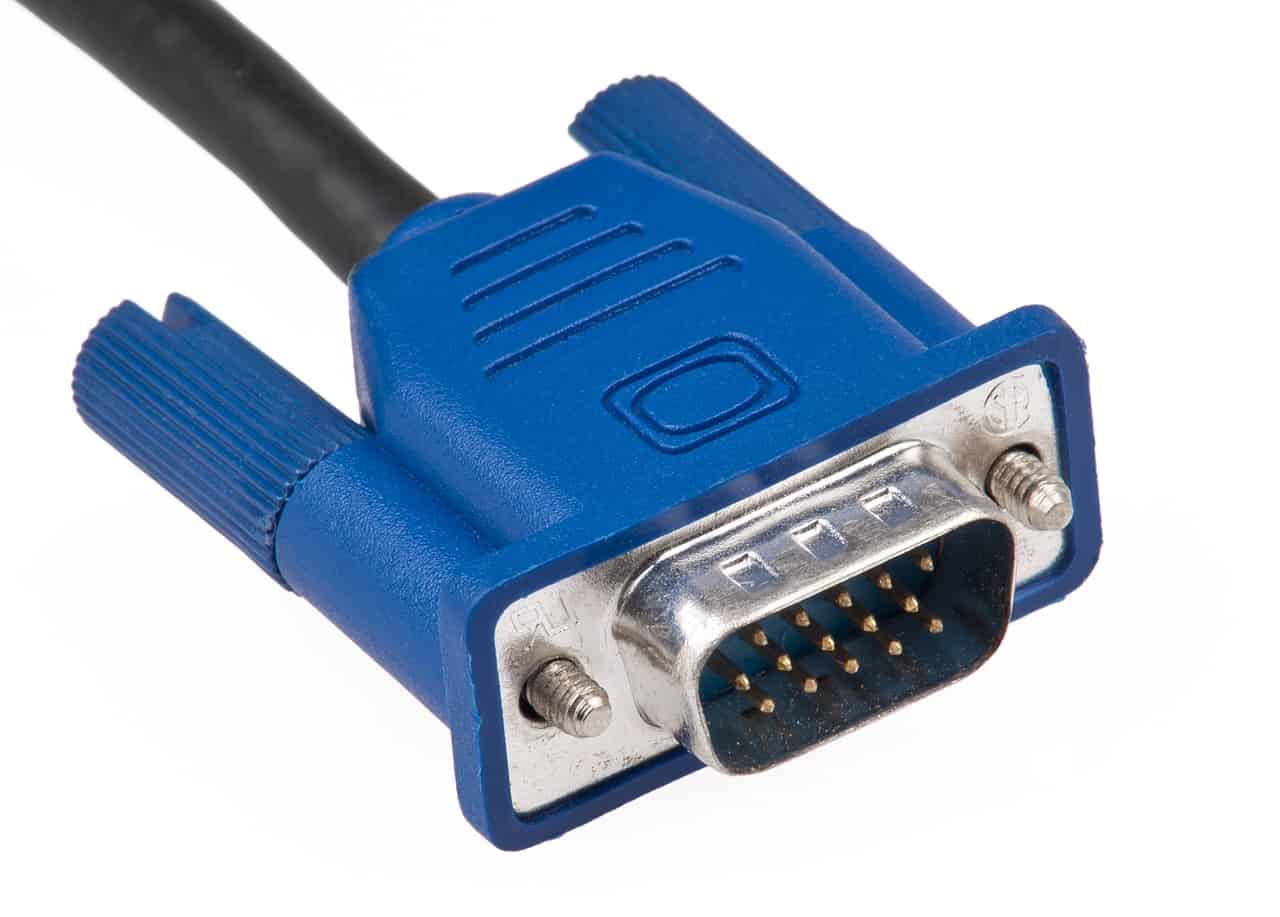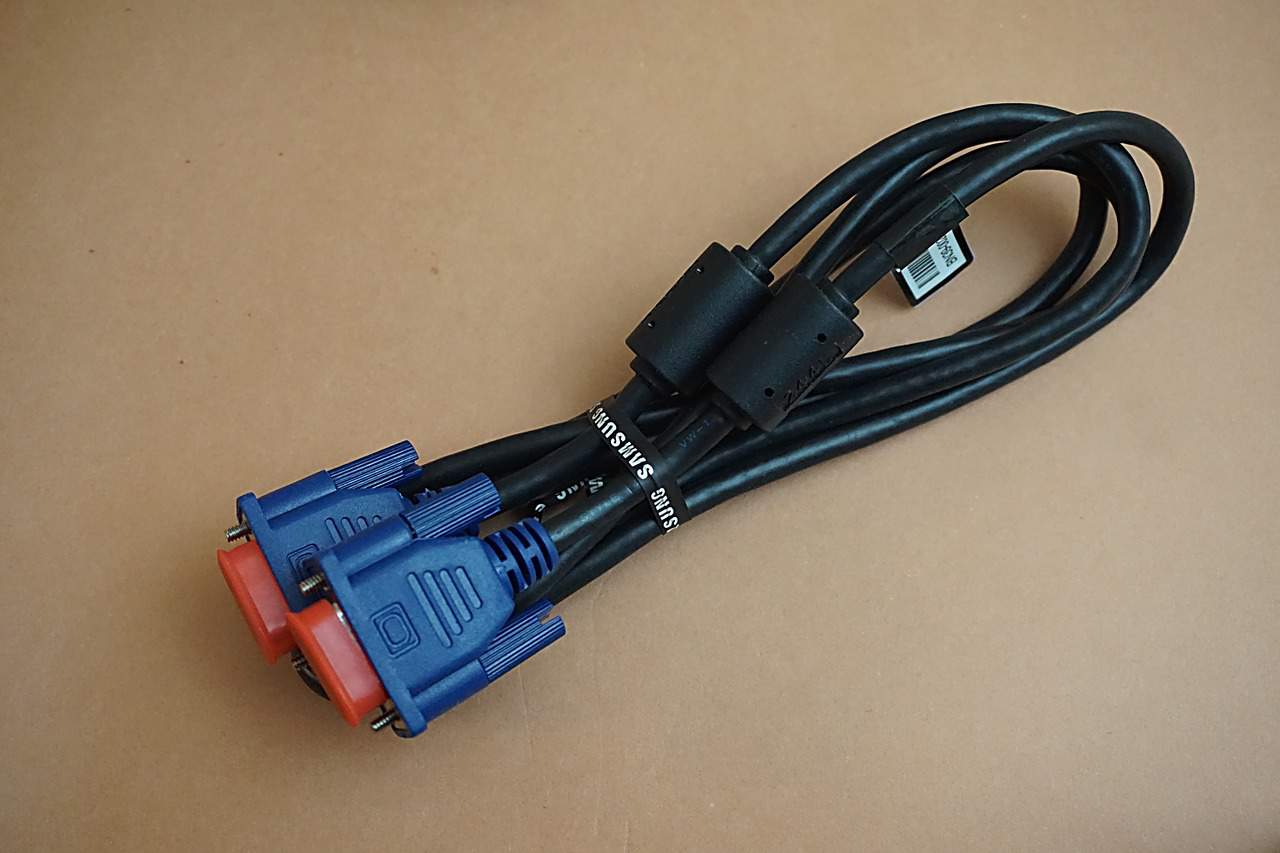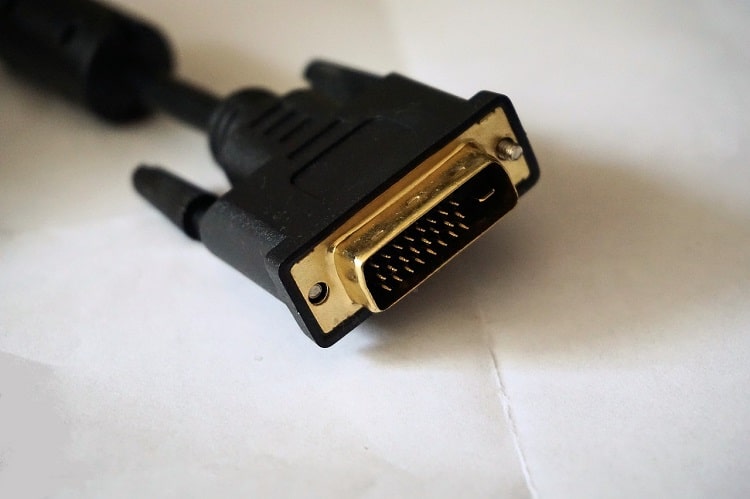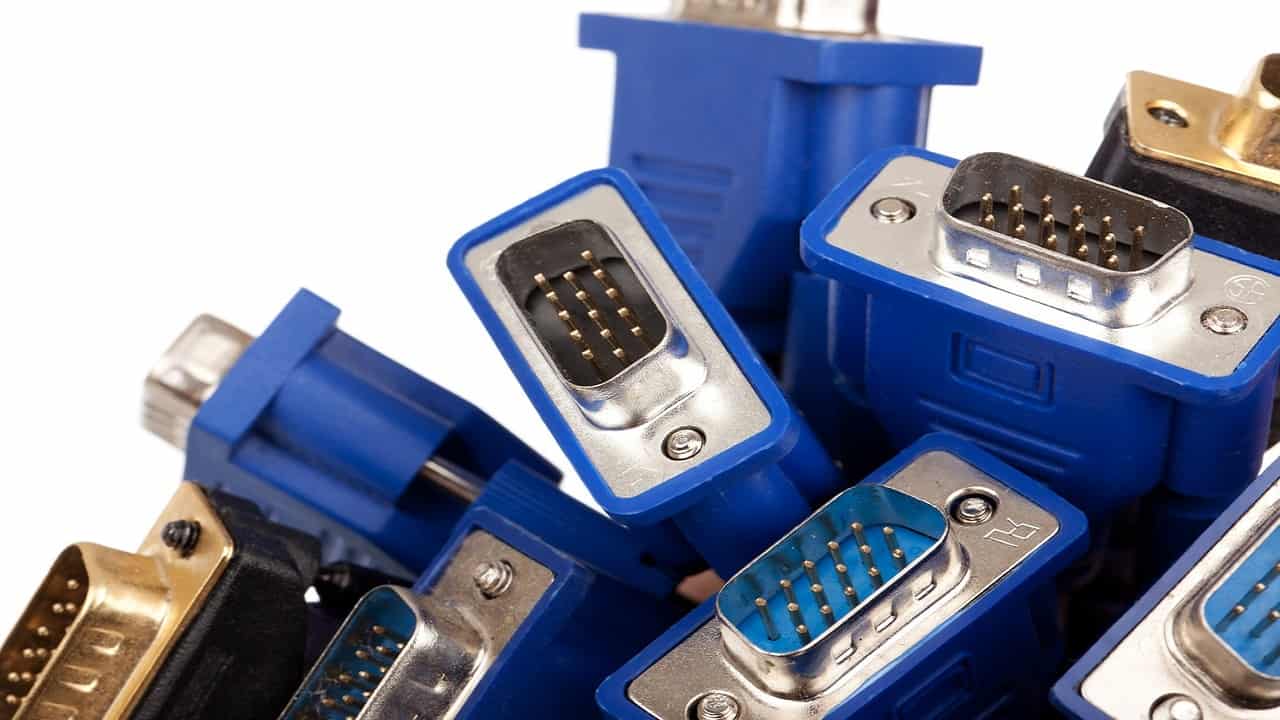- Front Case Fan Not Spinning: [3 Proven Fixes That Work - June 22, 2022
- Is 60 Degrees Celsius Hot For A CPU In 2022? [Must-Read] - June 7, 2022
- How To Handle CPU Temps Jumping: A Definitive Guide [2022] - June 2, 2022
Do computer monitor cables go bad? Yes, they do. They can deteriorate over the years and need replacing, even with the latest technology in 2022.
There are four main kinds of monitor cable – VGA, DVI, DisplayPort, and HDMI. The first two are much older, and the second two are more recent.
But whatever cable type you’re using, you have to be ready when your monitor stops working, so that you can fix it fast.
Knowing about possible faults with the cables makes it easy to save time and reduce stress.
There are many ways to determine whether a cable has gone bad, and you can learn the signs that show it’s happened to one of your cables.
But there are differences depending on the cable used with your monitor.
This article will cover those four main cable types and more general information. We’ve also added an FAQs section covering extra details.
That way, you’re prepared to act when your screen goes dark!
Contents
Do Cables Wear Out?
Yes, they do. As time passes, faults are more likely to crop up. One of the most common is when your cable is repeatedly disturbed. It can get pulled around or unplugged if it runs across a floor.
Sometimes, though, cables will wear out in different ways. The metal pins on VGA and DVI cables can rust and corrode, making it difficult or impossible to connect to a monitor.
DisplayPort and HDMI cables can suffer from dust or get crushed. If you’d like to choose the best cable type, we’ve found a great video covering all four.
How Long Do Monitor Cables Last?
It depends on the specific type of cable that you have. Modern ones like HDMI cables tend to last longer as they have fewer exposed parts, unlike the screws on a VGA or DVI cable.
But there are some standard estimates. Most cables left alone without misuse or disturbance operate for 50 years. With regular everyday use, it’s more like 20 years.
But by that time, the monitor they’re attached to will have become obsolete anyway.
If there is a lot of unplugging, movement, or anything causing rust, that number will be much lower.
Why Do Cables Go Bad So Easily?
Cables feature polymers used for sheathing and insulation. These can degrade over time due to excessive loading or heat. If your cable is in use 24 hours a day, it will wear out much faster.

Sometimes the wires inside the cable get pinched, preventing signal transmission. Small metal connecting pins can get crushed or warped too.
Occasionally, a cable you’ve bought will have weak materials that wear out.
How Do You Test A Monitor Cable?
You need to plug the cable into the monitor and your computer, then switch them both on. If your screen shows a no signal message, there is a problem with one of your components.
Try again with a different cable and see what happens. If the same issue persists, we’d suggest your computer’s monitor, video card, or port has an issue.
How Long Does A VGA Cable Last?
A VGA cable should last the same amount of time as most cables, which is half a century. That way, you can rely on it to power your monitor for as long as you’ll be using it.

But if any damage occurs to the VGA cable screws, pins, or wires, that could make it unusable.
How Do I Know If My VGA Cable Is Bad?
If you can’t see any of the visible signs covered in the article already, you’ll need to focus on your monitor.
If the image has distortions or cuts out, that suggests a cable fault or an issue with your graphics card. If another cable works well, the cable you were using is the problem.
Can A DVI Cable Go Bad?
Yes, it can. I’ve found it challenging to determine what causes issues with DVI cables. There are many possibilities.
It could be a weak DVI transmitter on your graphics card, a lengthy cable, or a poor-quality DVI receiver.
If there are any broken pins, frayed wires, or damaged sheathing, you can assume the cable is the issue.
Do I Have A Bad Monitor or DVI Cable?
If you think your monitor or DVI cable has a problem, we recommend testing a different cable first. Failing that, test a different computer with the monitor and see what happens.
If the monitor still doesn’t work, then it has a fault. Otherwise, it will be the DVI cable or the computer that has the fault.
How Long Do DisplayPort Cables Last?
We’ve found that the quality of the cable you buy has the largest impact on how long it lasts.

Unlike most cables, a cheaper DisplayPort cable may only last a few months, but better ones will last for many years. It’s best to research several alternatives and pick one with good user reviews.
Why Is My DisplayPort Cable Not Working?
Sometimes we’ve found that DisplayPort cables have poor wiring and cause a boot failure. That’s usually avoidable by unplugging your DisplayPort cable from the monitor first.
Also, if a single pin becomes damaged on a DisplayPort cable, it won’t work.
Each pin plays a role in its functionality, much like VGA or DVI cables. But because the pins on DisplayPort cables are tiny, damaging them is difficult.
Do HDMI Cables Go Bad?
Do computer monitor cables go bad is a question you might think doesn’t apply to HDMI cables.
And you’re mostly correct. High-quality HDMI cables are very popular because they have superior technology.

That means they shouldn’t go bad, so long as you keep them in good condition. I’ve found that running them along the side of a carpet or using cable ties are the best ways to do that.
HDMI cables also have insulated copper wires. They’re protected with a foil shield, braided shielding, and then a plastic layer.
That makes it difficult for them to go bad. Buying gold-plated HDMI cables can improve their durability and ward off corrosion.
How And Why Do HDMI Cables Stop Working?
An HDMI cable stops working when it can no longer transmit or receive a video or audio signal. It’s usually because of rust or corrosion, harsh weather conditions, or wear and tear.
Sometimes it’s just dust, which you can get rid of by blowing into each end of the cable and plugging it in again.
Do Computer Monitor Cables Go Bad And Need Replacing?
Yes, they do. You’ll have to deal with a monitor cable that’s no longer fit for purpose from time to time. It could have broken for any reasons we’ve covered in the article, and sometimes you won’t know.
We’ve found that replacing the cable is a simple process, so long as you know the correct type of cable for your monitor.
FAQs
Why Won’t My Computer Detect My Monitor?
You might have an outdated graphics driver, a broken monitor, or a fault with your computer. The ports on your computer could be dusty or rusty, which might block your connection. The best way to find out is to test different components, but examine the ports before doing so.
What Does It Mean When Your Computer Displays A “VGA No Signal” Message?
If you see this message, the signal your computer is transmitting isn’t getting received. Or, it could mean that no signal is being received at all. With a VGA cable, you should also check the screws have not come loose and that the connection is secure.
Why Does My Computer Monitor Show A “DVI No Signal” Message?
As with VGA cables, the reason is very similar. Your video card will be sending a signal through the cable if it’s working correctly. But it may have become dislodged, or your monitor may not have the right source selected if it’s more modern.
Why Does My Monitor Say “No Signal Detected” When Connected With A DisplayPort?
The DisplayPort cable is more recent than DVI and VGA cables. It doesn’t have such large pins, so the answer is different from the previous ones. You’ll need to check that the cable is in as far as possible. You can unplug it and try again if that doesn’t fix it.
Why Is The Monitor Showing There’s No HDMI Signal?
The lack of a signal can seem mysterious with a modern cable like an HDMI cable. We’ve found all sorts of reasons. A dodgy cable, a monitor in sleep mode, or a broken video card are some causes.
It’s worth testing each possibility through a process of elimination. Then you’ll find the problem and be able to solve it.


![Best Mousepad For High DPI [7 Amazing Picks Reviewed] Best Mousepad For High DPI [7 Amazing Picks Reviewed]](https://maximum-tech.net/wp-content/uploads/2022/02/best-mousepad-for-high-dpi-150x150.jpg)
![Best CPU For Programming In 2022 [7 Picks For Every Budget] Best CPU For Programming In 2022 [7 Picks For Every Budget]](https://maximum-tech.net/wp-content/uploads/2022/02/best-cpu-for-programming-150x150.jpg)
![How To Change CPU Fan Speed Without Bios? [Easy Guide] How To Change CPU Fan Speed Without Bios? [Easy Guide]](https://maximum-tech.net/wp-content/uploads/2022/05/How-To-Change-CPU-Fan-Speed-Without-Bios-150x150.jpg)
![D-sub Vs. HDMI - Everything You Need To Know [2022] D-sub Vs. HDMI - Everything You Need To Know [2022]](https://maximum-tech.net/wp-content/uploads/2022/03/D-sub-Vs.-HDMI-1-150x150.jpg)
![Best CPU for Minecraft In 2022 [7 Worthy Picks Reviewed] Best CPU for Minecraft In 2022 [7 Worthy Picks Reviewed]](https://maximum-tech.net/wp-content/uploads/2022/04/best-cpu-for-minecraft-150x150.jpg)
![How To Know If CPU Is Dead? [A Comprehensive Guide 2022] How To Know If CPU Is Dead? [A Comprehensive Guide 2022]](https://maximum-tech.net/wp-content/uploads/2022/04/How-To-Know-If-CPU-Is-Dead-150x150.jpg)